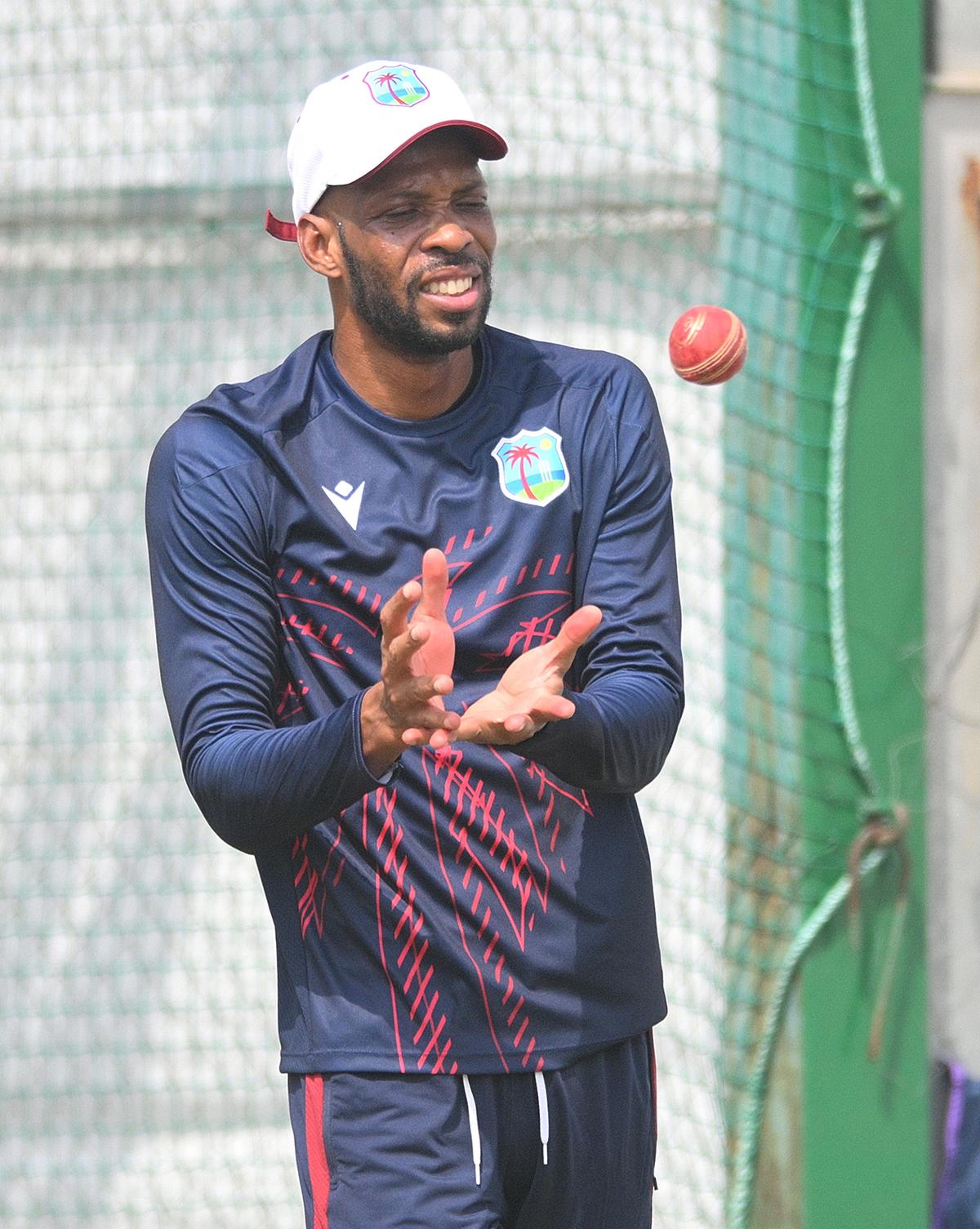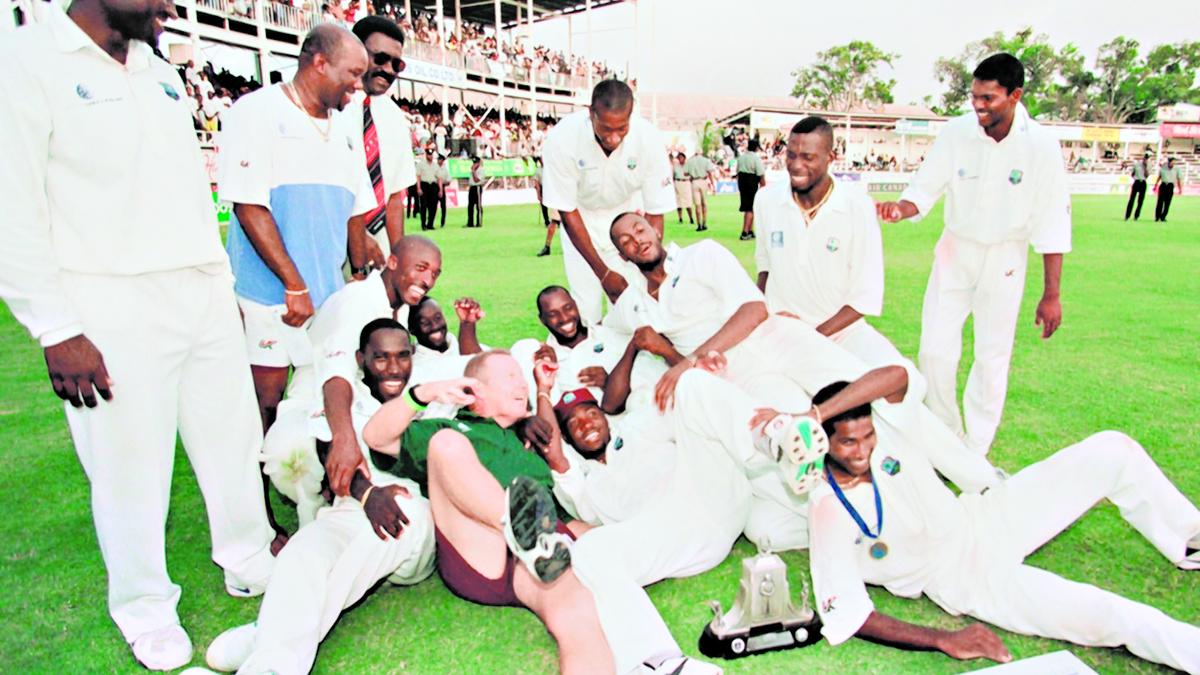Revolutions take a long time coming. Except on celluloid, dramatic changes don’t take place in a jiffy. They are a slow burn until they aren’t, until a tipping point is reached, until people can’t take it anymore.
West Indies cricket is desperately hoping for a revolution. Slow burn? Doesn’t matter. Just let the process start.
Truth to tell, it isn’t just those in the Caribbean that are hoping for a sustained change of cricketing fortunes. The entire landscape of the sport would love to see West Indies, free-spirited West Indies, attacking, aggressive, exhilarating West Indies, expressing themselves with nonchalance and joie de vivre, both once their calling cards but which have now gone almost entirely out of circulation.
What must Sir Garfield Sobers be going through now, reflecting on the huge fall from grace of a team he helped boss for years together? What must Clive Lloyd and Viv Richards be thinking? And Michael Holding and Andy Roberts and Joel Garner? Curtly Ambrose and Courtney Walsh? The Prince, Brian Lara, Carl Hooper and Shivnarine Chanderpaul? How will they be able to reconcile to dwindling results, to diminishing returns, to an unchecked downslide that has sent the one-time behemoths to No. 8 in the ICC rankings for Test teams?
West Indies have tried – or given the impression that they have tried – every trick in the book to revive the fortunes of the team that represents the Caribbean islands but, uniquely, not a tangible entity, not a nation or a country – at best, a region. When things don’t go well, like they haven’t for years now, it can become difficult to invoke national pride. The maroon cap is still a cherished treasure, but it doesn’t have the same charm or allure or pull that it once used to.
In a classic chicken-or-egg conundrum, it’s hard to say if the lack of results has triggered apathy, or whether all-round indifference has led to the lack of success on the field. The production line, once bursting at the seams thanks to the bountiful embarrassment of riches, is now running on fumes.
The pace merchants who terrorised and thrilled are largely out of fashion, the beautifully brutal ball-bashers are few and far between. Without any disrespect to the current bunch, several of them would have struggled to make it to even the teams representing their islands in another vintage. Today, Test batters averaging in the 20s is the norm, a sensational dip from the days of the three Ws downwards.
Hard times
It must be hard for Roston Chase, the Test captain for less than five months, to have to keep fielding questions about the legacy of West Indian cricket and what his team can do to bring back the halcyon days. It can’t be easy for Daren Sammy, as proud a West Indian as there is, to perform the role of the head coach when his side doesn’t show stomach for battle. It must be painfully evident to the West Indian supporter, a near-extinct breed, that the gap between his favourite outfit and several other sides, not just India and Australia and South Africa, is huge and growing by the minute. Surely, it ought therefore to be obvious to the administrators that unless there is immense hand-holding on various fronts, the inexorable tailspin will continue until rock bottom has been reached, until nadir is courted.

Roston Chase
| Photo Credit:
VIJAY SONEJI
One of the principal reasons put forth for the seeming indifference to Test cricket in the various islands that contribute to the cricketing ecosystem is the lack of adequate grassroots infrastructure, an offshoot of the financial status of Cricket West Indies. There is some merit in that line of argument, but the figures tell a tale that can surprise those who have assumed the worst when it comes to remuneration to players. The match fee per Test is $5,000 (approximately ₹444,000), which isn’t a small amount; it pales compared to what an Indian player gets, which is Rs 15 lakh, but then again, that’s how the market works, doesn’t it?
Senior central contracts have been awarded by Cricket West Indies to 15 players, and while there is no official confirmation of how much money that entails, it’s supposed to range between $150,000 and 300,000, depending on whether one plays only one format or all three formats.
An all-format player therefore can get up to approximately ₹2.6 crore per year; just to put things in perspective, a player in Group C (the lowest grading) in the latest BCCI annual retainer list stands to earn ₹1 crore.
Infrastructural inadequacies is a genuine problem for which will and desire must be matched by commerce. Much of CWI’s revenue stems from International Cricket Council funding which, for the 2024-27 cycle, is $27.5 million per year. How and where this money is utilised is crucial.
In the last two decades, there has been a huge dip in role models to emulate, in heroes to want to be like. Sammy concedes as much when he reveals, “Growing up, we had heroes. Lara, Sir Viv (Richards), Ambrose, Walsh, Richardson — we got so many different heroes. So many. Me watching cricket with my father, I wanted to be like this guy. Over the last decade, the format where the heroes come from has been the T20 format. And that’s why you see some of the direction in which the younger players are heading. That’s where the heroes are.”
But not even there anymore, it would seem, Darren. No great T20 talent has burst forth since perhaps Nicholas Pooran, no newcomer has set any of the global leagues afire on a sustained basis. The T20 stalwarts globally still are Pooran, Sunil Narine, Andre Russell, occasionally Kieron Pollard. West Indian T20 stocks too have declined massively since they won two T20 World Cups in five years, between 2012 and 2016. For the first time in the tournament’s history, they failed to qualify for the ODI World Cup in 2023. Amidst all the romanticism associated with West Indies cricket, this alarming plumbing of the depths can’t be overlooked or wished away.
Sammy spoke of how West Indies deserve everything because of what they have done for cricket, for popularising the sport, for entertaining people across the world when they ruled the sport with an iron fist.
To an extent, he is right when he says the players didn’t reap the rewards of their domineering run while other boards cashed in on their popularity to fill their coffers by inviting the Caribbeans to play in their own dens. But that was then, and that was when there wasn’t a lot of money to be made out of cricket. The huge grace marks West Indies cricket has received for throwing up several eternal legends of the game are slowly disappearing.
Chase bemoaned the lack of infrastructural development, alluding inter alia to sub-par pitches that prevent batters from mastering the art of batting long and to heavy, slow outfields that don’t provide value for strokes. At one level, these seem like excuses, even if they aren’t meant to be.
Pitches worldwide have changed character and it’s no different in the Caribbean, where fast bowlers once relished the conditions. Slowly, the pitches lost bite and became slow and low, like their subcontinental counterparts. But then again, even in England, surfaces that help lateral movement are going out the window. And not that Chase needs any reminding, but runs can be accrued through ones and twos, the bread-and-butter of run-making, not through glamorous boundaries alone.
Chase insists Test cricket is the ultimate format and that he has disengaged himself from franchise cricket to plunge himself whole-heartedly into the five-day game, but it goes without saying that he can’t do things all on his own. No one is suggesting that players should not seek refuge in franchise leagues worldwide as a means of livelihood.
For CWI to try and retain core performers, they must make playing for West Indies attractive and lucrative, and not necessarily only financially. For the ICC to set up a Test fund towards that end is most welcome, but CWI must also make a serious attempt to raise money on its own steam instead of being entirely dependent on the world body. It’s hard to attract revenue in the absence of results, but when the absence of results stems from the lack of revenue, what do you do?
Occasionally, like the fleeting silver lining rimming the darkest of clouds, one exceptional talent will surface, shine all too briefly and then be lost to distractions far removed from the sport or to the lure of 20-over cricket. That’s why stunning conquests such as those against Australia in Brisbane and Pakistan in Multan in the last 21 months will remain upsets, a sporadic reminder of what West Indian cricket is capable of. One swallow, however, does not a summer make. The very fact that we are talking about isolated Test victories is testament to the fact that not all is well with West Indian cricket right now.
Sammy won’t go away quietly, not without fighting to get his wards to buy into his vision of Test cricket. In that endeavour, he has his captain firmly on his side.
To get a core leadership group that is so openly vocal about the five-day game is a great bonus; Sammy is a grand motivator of men, as he showed during those two T20 World Cup victories, while respect for Chase will not be at a premium for his call to give up on franchise cricket to focus on Tests, It’s to these two that a young bunch will keep looking up for inspiration and guidance and motivation, but the good intentions of the coach and the captain need to be reciprocated by those occupying the corridors of power.
In the aftermath of being shot out for 27 by Australia in July in Kingston, steps are being discussed by some of the greatest to have graced the cricketing stage to undertake a sweeping overhaul. Fingers crossed, that is the catalyst for the revolution everyone’s thirsting for.

